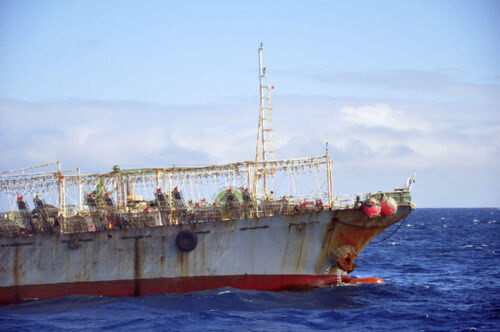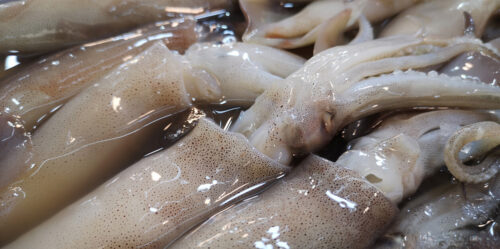Chris Kerry, a researcher at the University of Exeter in the UK, is using Global Fishing Watch gridded data to understand if seamounts are targeted by fishing vessels and if fishing activity is linked to any specific seamount characteristic.
Seamounts, or undersea mountains that rise from the ocean floor, create an environment rich with biodiversity. Yet little is known about these habitats and the species that depend on them, and few are protected from threats such as deep-sea fisheries.
For Chris Kerry and Dr. Matthew Witt of the Environment and Sustainability Institute at the University of Exeter, a better understanding of fishing around seamounts is an important step to protecting these unique underwater ecosystems.
“Our entire project has changed since receiving the Global Fishing Watch data,” Kerry says.
“When ocean currents hit seamounts, food particles are made available by the churning of nutrients and minerals,” Kerry says, “making the environment a good home for a number of filter feeders such as corals, sponges, and more.” Like snow swirling above a wind-blown mountaintop, tiny marine animals called zooplankton are lofted by ocean currents into the water above and around the seamounts where they serve as a buffet for a variety of fish and invertebrates, and their predators that follow. And when those predators include fishers, Kerry wants to know about it.
He studies the potential impact of fishing on seamounts, and until now, his work has been hindered by the low resolution of the satellite imagery he has had to work with.
Our data allows Kerry to study patterns of fishing activity around seamounts enabling him to investigate whether fishing vessels target seamounts and the influence of seamount characteristics such as height on fishing levels. With our data, he can also analyze how different types of fishing vessels, such as longliners, purse-seiners, and trawlers, interact differently with seamounts.
The answers to these questions could have powerful impacts on conservation. Kerry thinks that his lab’s published findings could highlight seamounts as prime candidates for improved management.
“Seamounts are biodiverse but largely unprotected, especially in the high seas. If we can find particular seamount characteristics that are linked to heavy fishing, that can be applied to spatial management policy,” he says.
A better understanding of how specific types of fishing vessels target seamounts differently would further assist with management. For example, if findings suggest that longline fishing vessels target seamounts the most, a specific fishery closure for that type of vessel could be proposed.


